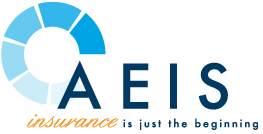Employee Assistance Program
What is an Employee Assistance Program (EAP)?
An employee assistance program, also known as an EAP, is an intervention-driven program designed to assist employees in navigating personal or work-related challenges that may impact their well-being, job performance, or mental health. Employers who implement programs like EAPs demonstrate a commitment to supporting their workforce during difficult times. These initiatives provide employees with the necessary resources to address certain challenges and help foster a stronger commitment to the workplace.

How Does an EAP Benefit Your Workplace?
In addition to the almost
immediate productivity gains, adding this type of offering to an already robust benefits package also makes it easier to both attract and retain top talent. People are more likely to want to work for an employer who has illustrated that they legitimately care about their employees. It also helps existing employees remain more engaged, making them less likely to look for work elsewhere.
What Does EAP Include?
Although the specifics of an EAP will obviously vary depending on exactly which program you're talking about, most often provide confidential counseling services to employees and their family members and include some combination of assistance in the following areas:
- Stress
- Anxiety
- Depression
- Anger management
- Domestic violence
- Eldercare
- Financial issues
- Grief and/or loss
- Substance abuse issues (like alcohol or drug use)
Employee assistance programs are often voluntary and strictly confidential due to the sensitive nature of the issues being discussed. EAPs are usually accessible 24/7 through a toll-free hotline or online portal, allowing employees to access support whenever they need it. EAPs may also offer flexible options for accessing services, such as in-person counseling, telephonic counseling, video counseling, and online chat support.
EAP Requirements
To be eligible for an employee assistance program depends on the eligibility guidelines an employer has set in place. An employee would need to be active in the workplace though. EAPs can be made available to both full and part-time employees and can be offered to employees regardless if they are enrolled in other employee benefit programs, such as medical, dental, or vision.
How Much Does an EAP Cost Employers?
There are two types of EAPs, a standalone EAP and an integrated EAP.
A standalone EAP operates independently from other organizational programs and services offered to employees and usually an employer works directly through the EAP provider. An employer usually has more control in selecting an EAP that works for their workforce and can have more control over what is offered and covered. According to one recent study, a standalone EAP will cost between $12 and $40 per employee per year.
An integrated EAP is embedded within another program, such as your group’s medical or ancillary insurance. Typically if an employer offers three lines of coverage, such as dental, vision, and group term life, through the same ancillary carrier, the employees will have access to an EAP at no cost to their employer. The employer does not have control over the EAP carrier or what services are offered as it is already predetermined by the ancillary carrier.
How to Implement EAP in the Workplace
The most important step to take when starting an EAP for your own business involves identifying exactly what services your employees need. Remember that there is no "one size fits all" approach to this. You need to speak directly with your workforce to understand what they're going through and what they could use assistance with - that will put you in the best position to do precisely that.
After you come right out and ask your employees what they might want out of an EAP, you can then think about how you want to offer the services. They can be on-premises or at the location of a dedicated provider depending on your needs.

You'll then need to research if you may have access to one through one of your current programs, or research potential providers and vendors for the services you're looking to implement. Pay particular attention to the scope of services and how people will need to pay for them.
Finally, on an ongoing basis, it is always important to evaluate your EAP to make sure it is as effective as possible at all times. Make any changes that are necessary as quickly as possible to give yourself the best chance of success.
If you'd like to find out more information about the ins and outs of an employee assistance program, or if you just have any additional questions that you'd like to go over with someone in a bit more detail, please don't delay -
contact the AEIS team today.


